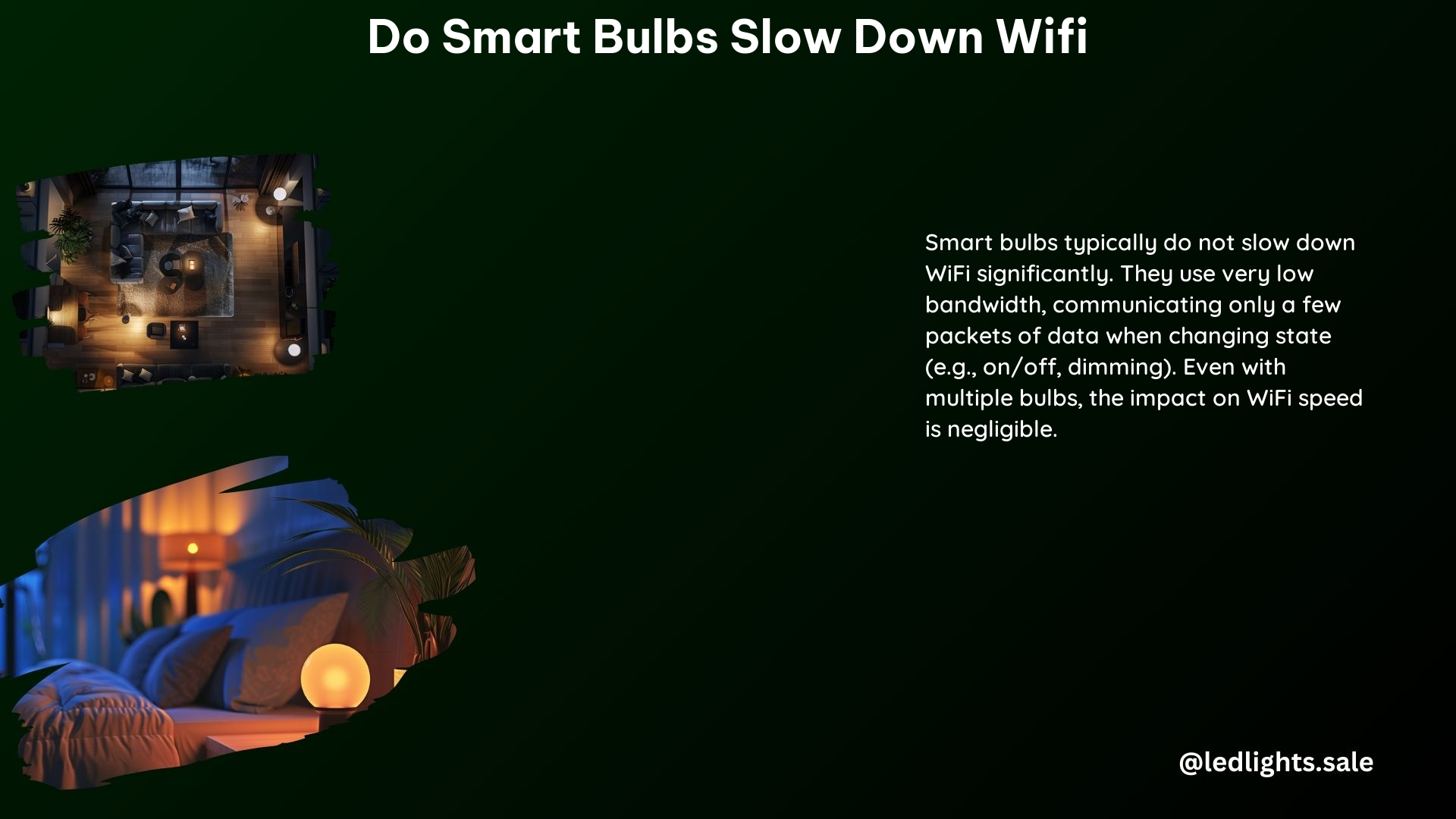Smart home technology has revolutionized the way we interact with our living spaces, and smart bulbs have become a popular addition to many households. However, one common concern among homeowners is whether these smart bulbs can slow down their WiFi network. In this comprehensive guide, we’ll explore the technical aspects of smart bulbs and their impact on your wireless network, providing you with the information you need to make an informed decision.
Bandwidth Usage: The Negligible Impact
One of the primary concerns about smart bulbs and their effect on WiFi is the amount of bandwidth they consume. Fortunately, the news is good – smart bulbs typically use very little bandwidth, often less than 1Mbps per bulb. This is because they are designed to communicate in short bursts, such as when changing state (on/off/dim), and remain relatively quiet for the majority of the time.
To put this into perspective, a standard 1080p video stream requires around 5-8Mbps of bandwidth, while a 4K video stream can consume up to 25Mbps. In comparison, a single smart bulb’s bandwidth usage is negligible, even in a household with multiple connected devices.
Communication Protocols: Zigbee vs. WiFi

Smart bulbs can connect to your home network using different communication protocols, and this choice can have an impact on your WiFi performance.
Zigbee Bulbs
Some smart bulbs utilize the Zigbee wireless protocol, which operates on the 2.4GHz frequency band, the same as WiFi. However, Zigbee is a low-power, mesh network protocol, which means that the bulbs can communicate with each other and a central hub, rather than directly with your router. This can help to offload traffic from your WiFi network, making it a more reliable and efficient option for smart home automation.
Zigbee bulbs typically require a dedicated hub or bridge device to connect to your home network, which adds an extra component to your setup. However, the benefits of a Zigbee-based system can outweigh the additional cost, especially in larger homes or when integrating with other smart home devices.
WiFi Bulbs
Alternatively, some smart bulbs connect directly to your WiFi network, communicating directly with your router. This approach eliminates the need for a dedicated hub, but it also means that the bulbs are more dependent on the strength and stability of your WiFi connection.
While WiFi-connected bulbs are generally easy to set up and integrate with your existing smart home ecosystem, they can potentially contribute to network congestion if you have a large number of them, or if your WiFi router is not capable of handling the additional client devices.
Network Capacity: Ensuring Optimal Performance
The number of connected devices on your WiFi network can have a significant impact on overall performance. If you have a large number of smart home devices, including smart bulbs, it’s essential to ensure that your WiFi router can handle the additional client connections.
Most modern WiFi routers are capable of supporting a substantial number of connected devices, but it’s important to check the specific client capacity of your router. Older or lower-end models may struggle with a high number of connected devices, leading to slower speeds, increased latency, and potential connectivity issues.
When adding smart bulbs to your home, it’s a good idea to assess your network’s capacity and consider upgrading to a newer, more powerful WiFi router if necessary. Look for routers that support the latest WiFi standards, such as WiFi 6 (802.11ax), which offer improved speed, coverage, and power efficiency, making them better suited for smart home applications.
Troubleshooting and Best Practices
If you do experience any issues with your WiFi network after installing smart bulbs, there are a few troubleshooting steps you can take:
-
Assess Your Network: Use a network analyzer tool or mobile app to check the overall network usage, client connections, and signal strength. This can help you identify any potential bottlenecks or interference issues.
-
Optimize Bulb Placement: Ensure that your smart bulbs are placed in locations with good WiFi coverage. Avoid placing them too far from your router or in areas with potential interference, such as near metal objects or other wireless devices.
-
Consider a Zigbee Hub: If you’re experiencing connectivity issues with WiFi-connected bulbs, consider switching to a Zigbee-based system with a dedicated hub. This can help offload traffic from your WiFi network and provide more reliable local control.
-
Upgrade Your Router: If your network is consistently struggling to handle the additional smart home devices, it may be time to upgrade to a more powerful WiFi router that can better support your growing smart home ecosystem.
By following these best practices and troubleshooting steps, you can ensure that your smart bulbs integrate seamlessly with your home network, without compromising the overall performance of your WiFi.
Conclusion
In summary, smart bulbs generally do not slow down your WiFi network, as they typically use very little bandwidth and communicate in short bursts. However, the specific communication protocol (Zigbee vs. WiFi) and the overall capacity of your home network can play a role in the performance of your smart bulbs.
By understanding the technical considerations, choosing the right bulbs, and ensuring your network is optimized for smart home devices, you can enjoy the convenience and benefits of smart lighting without compromising your WiFi experience.
